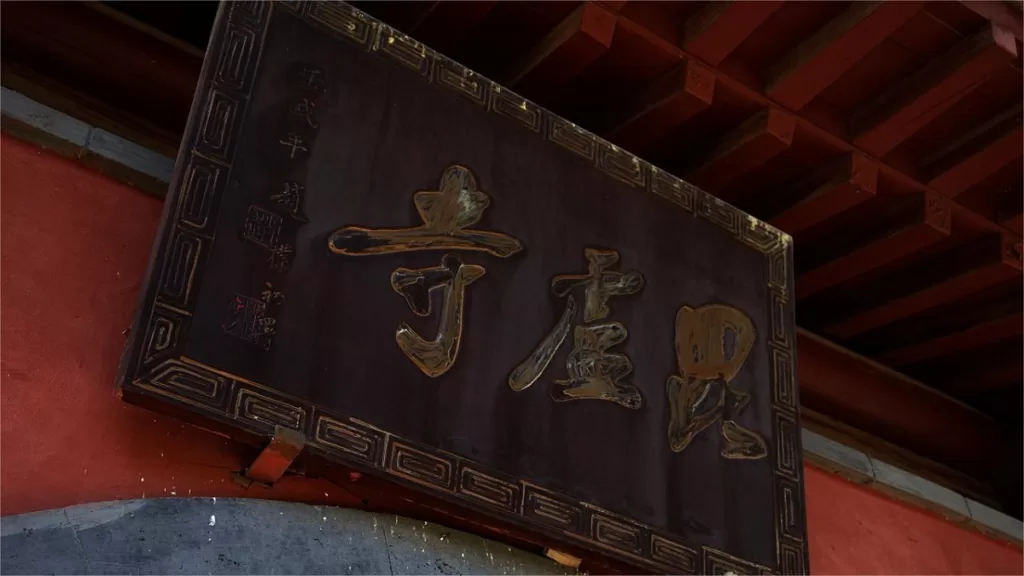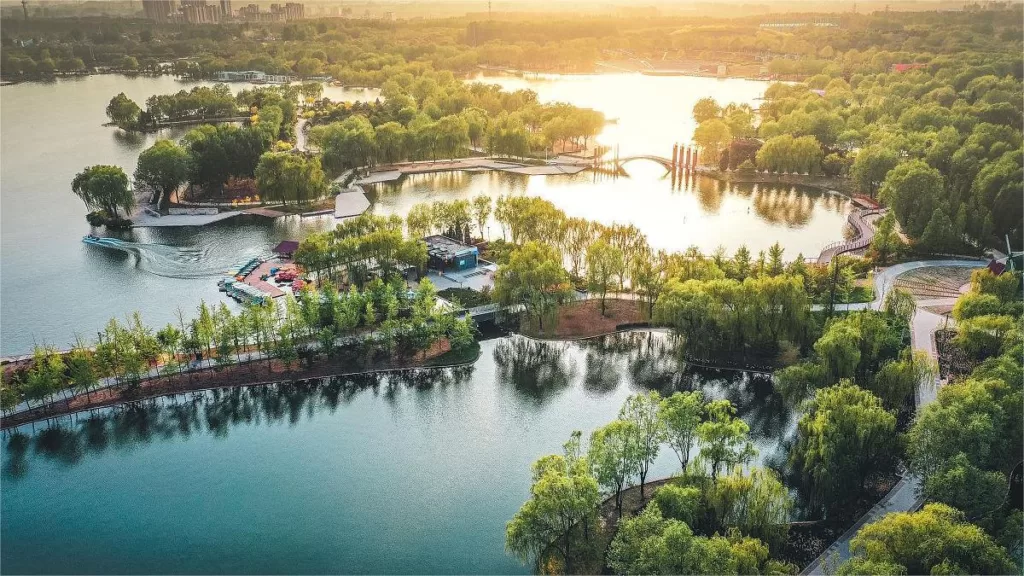Hebei Museum (河北博物院), formerly known as the Hebei Provincial Museum, was established in 1953 and is situated in Shijiazhuang. With a total floor area of 53,128 square meters, the museum is a treasure trove of cultural artifacts, housing a remarkable collection of 210,000 items. Among these, there are 340 first-grade cultural relics (items/sets), 1,926 second-grade cultural relics, and 17,383 third-grade cultural relics. The museum’s rich and diverse collections focus on treasures unearthed from the Han tombs in Mancheng, artifacts from the Yan and Zhao periods, ancient ceramics and kilns from Hebei, and cultural relics related to the anti-Japanese war in the region. Its extensive and high-quality exhibits consistently rank among the top museums in the country, making it a must-visit destination for those seeking to explore the history of Hebei.
The museum is organized into three floors, with each floor divided into south and north sections. The main permanent exhibitions are located in the south section, while the north section primarily hosts temporary exhibits. Knowledgeable guides are available in each exhibition hall, providing insights into the displayed artifacts. Guided tours are typically conducted once in the morning and once in the afternoon. Specific timings can be checked on the official website. Additionally, on the first floor, visitors have the option to rent audio guides for a fee of 20 RMB per unit, with a 200 RMB deposit required. Exploring the Hebei Museum offers a comprehensive understanding of the province’s rich history, making it an essential stop for travelers exploring Shijiazhuang.
Table of Contents
- Basic Information
- Location and Transportation
- Displays of Hebei Museum
- Top Ten Treasures in Hebei Museum
- Useful Tips Summarized from Reviews
- Attractions near the Downtown of Shijiazhuang
Basic Information
| Website | https://www.hebeimuseum.org.cn/ |
| Exhibit Area | Over 22,000 square meters |
| Number of Artifacts | About 210,000 |
| Estimated Length of Tour | Over 3 hours |
| Ticket Price | Free |
| Opening Hours | 9.00 – 17.00; Last admision: 16.30 Closed on Mondays |
| Telephone Number | 0086-0311-966518 |
Location and Transportation
The Hebei Museum is located in Shijiazhuang, the capital city of Hebei Province, China. Situated in the heart of this vibrant city, the museum’s physical address is a vital part of No. 158, Xinhua Road, Qiaoxi District, Shijiazhuang, Hebei Province. To get there, you can choose the following ways:
Bus: Take bus 1, 5, 10, 18, 28, 30, 41, 42, 45, 60, 68, 83, 85, 95, 116, 130, or 519 and get off at the Museum Stop (博物馆站).
Metro: The closest metro station to Hebei Museum is Bowuyuan (博物院) on line 1. After getting out of the station from Exit B, you will be standing at the square of the museum.
Displays of Hebei Museum
Hebei in the Stone Age

The Stone Age display at Hebei Museum is a captivating journey into humanity’s ancient past. Through meticulously curated artifacts, it vividly portrays the daily lives, innovations, and cultural expressions of our early ancestors. Intricately crafted tools, exquisite stone carvings, and remnants of dwellings provide insights into the resourcefulness and adaptability of prehistoric communities in Hebei Province. This exhibit serves as a tangible link to a distant era, inviting visitors to contemplate the remarkable ingenuity and resilience of those who paved the way for the province’s rich history and culture.
Hebei in Ancient China

The Ancient China display at Hebei Museum is a captivating portal into the dynasties and splendors that shaped the region’s history. Through an exquisite array of artifacts, it encapsulates the essence of ancient Chinese civilization. Intricate bronzes, delicate ceramics, and graceful calligraphy showcase the artistic achievements of bygone eras. Treasures from various dynasties (From 1600 B.C. to 581 A.D.) illustrate the evolution of culture, technology, and society, offering a glimpse into China’s rich heritage. This exhibit is a mesmerizing journey that celebrates the enduring legacy of Hebei and its profound contributions to the tapestry of ancient China.
Quyang Stone Sculptures

The Quyang Stone Sculptures exhibit at Hebei Museum unveils the extraordinary artistry of Quyang, a renowned hub of stone carving. This collection of masterpieces captures the essence of Chinese sculptural tradition, showcasing the province’s profound influence on the craft. Intricately chiseled statues, ornate reliefs, and exquisite architectural fragments offer a glimpse into the region’s rich cultural heritage. The exhibit celebrates Quyang’s legacy as a cradle of sculptural innovation, where stone comes to life through skillful hands.
Murals in Northern Dynasties

The Hebei Museum’s Northern Dynasties Murals exhibit unravels the rich heritage of ancient China through intricate wall paintings. Dating back to the Northern Dynasties period (439 A.D. – 581 A.D.), these murals offer an enchanting window into the past. Vivid depictions of courtly life, religious rituals, and daily existence bring history to life with vibrant colors and intricate details. Preserved with care, these artworks showcase the artistic finesse of the era, encapsulating the cultural blend of the time. A journey through this exhibit allows visitors to traverse the stories and aspirations of ancient China, highlighting the mastery of craftsmanship and the essence of the Northern Dynasties.
Exquisite Potteries

The Potteries exhibit at Hebei Museum is a mesmerizing journey into the province’s ceramic artistry. Showcasing an impressive collection of pottery spanning diverse eras, the exhibit illuminates Hebei’s cultural legacy. From ancient vessels that whisper tales of dynastic China to contemporary interpretations of traditional techniques, each piece reflects the region’s artistic evolution. Delicate forms, intricate glazes, and masterful craftsmanship provide insights into Hebei’s contribution to China’s ceramic heritage. This exhibit invites visitors to appreciate the beauty, innovation, and cultural significance woven into Hebei’s potteries, a living testament to the province’s enduring connection to the art of clay.
Anti-Japan War

The Anti-Japan War exhibit at Hebei Museum is a poignant tribute to the province’s resilience during a tumultuous era. Through artifacts, photographs, and narratives, it honors Hebei’s pivotal role in the struggle against Japanese aggression. This exhibit captures the indomitable spirit of its people, showcasing their sacrifices, heroism, and unwavering determination. From stories of resistance to relics that bear witness to the conflict, visitors gain a profound understanding of Hebei’s contribution to China’s fight for freedom. The exhibit stands as a solemn reminder of the past and a testament to Hebei’s enduring commitment to preserving history and promoting peace.
Top Ten Treasures in Hebei Museum
Useful Tips Summarized from Reviews
General Information: The southern section is the new museum housing permanent exhibitions with a rich collection of precious artifacts. The northern section is the old museum primarily used for temporary exhibitions.
Booking Information: Reservations can be made a week in advance. For weekends and holidays, it is recommended to book as early as possible.
Recommended Route:
- If time allows, start on the third floor and follow the chronological order: Stone Age – Shang Dynasty Civilization – Yan Zhao Stories – Ancient Zhongshan State – Mancheng Han Tomb – Murals, Stone Carvings, Ceramics.
- For those with limited time, focus on the second floor, where the essence and key exhibits are located.
Top 10 Featured Exhibits Location:
- Changxin Palace Lamp – China’s First Lamp:
- Location: 2nd floor, East Wing, Mancheng Han Tomb Exhibition Hall
- Cui Jin Boshan Furnace:
- Location: 2nd floor, East Wing, Mancheng Han Tomb Exhibition Hall
- Liu Sheng Jinlv Yuyi (Golden Thread and Jade Clothing):
- Location: 2nd floor, East Wing, Mancheng Han Tomb Exhibition Hall
- Cui Jin Yin Si Long Si Feng Bronze Model Stand:
- Location: 2nd floor, West Wing, Ancient Zhongshan State Exhibition Hall
- Zhongshan Wang Tiezu Bronze Tripod:
- Location: 2nd floor, West Wing, Ancient Zhongshan State Exhibition Hall
- Gold and Silver Tiger Devouring Deer Screen Stand:
- Location: 2nd floor, West Wing, Ancient Zhongshan State Exhibition Hall
- Painted Stone Scattered Music Relief:
- Location: 1st floor, Quyang Stone Carving Hall
- Blue and White Glazed Red Openwork Paste Flower Covered Jar:
- Location: 1st floor, Famous Kilns and Porcelain Hall
- Emperor Wenxuan’s High Yang Tomb Mural:
- Location: 1st floor, Northern Dynasties Mural Hall
- Carved Dragon and Phoenix Pattern Bronze Axle Head – China’s Largest Bronze Palace Gatehead:
- Location: 3rd floor, Yan Zhao Stories Exhibition Hall





